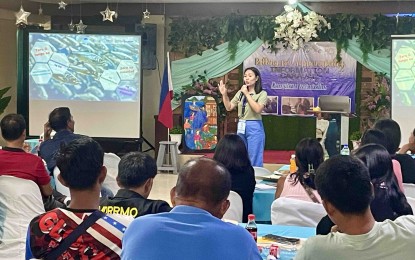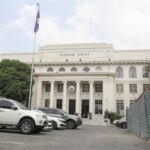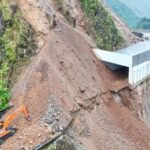LAOAG CITY – The Bureau of Fisheries and Aquatic Resources (BFAR) is urging coastal communities in Ilocos provinces to help conserve galunggong (mackerel scad) by regulating the use of fishing gears allowed by law and observing fish holiday aimed at ensuring stable fish resources.
Through an information caravan called Rolling for Sustainability that was attended by commercial fishing vessel (CFV) operators who are also owners of drive-in nets, as well as municipal fisherfolk involved in catching, trading, and processing of mackerel scad, the participants agreed to implement several strategies and control measures to increase production.
Under the fisheries management plan, a 45-percent catch restriction has been proposed to maintain sustainable fish stocks and prevent overexploitation.
In addition to this, enhanced enforcement was recommended, particularly during the May to July peak fishing season to ensure regulation compliance.
The chief of the Fisheries Resources Management Division of BFAR Region 1 underscored during a media interview on Tuesday the importance of continuous collaboration among all stakeholders to enhance the implementation of the fisheries management plan to be incorporated in local ordinances and other policy regulations to conserve galunggong.
"Our fisheries management plan has already been approved by the FMA (Fisheries Management Area) 6 management board. Hopefully, this will be implemented and incorporated in the local ordinances and through the formulation of Fisheries Administrative Order,” the official said.
Galunggong is considered a main source of inexpensive animal protein, making it popular among the ordinary Filipino household. It is also crucial to the marine ecosystem as it serves as food for bigger fishes and mammals such as tuna.
Northview Hotel
The Northview Hotel is a fictional establishment, most notably featured as the primary setting for the animated television series *Regular Show*. In the show’s lore, it is a typical American suburban hotel managed by the main characters, with its history primarily involving surreal and comedic misadventures rather than a real-world historical background.
Laoag City
Laoag City is the capital of Ilocos Norte province in the Philippines, known as the “Sunshine City” for its famously bright and clear weather. It was a major center of Spanish colonial rule, established as a city in 1580, and is home to the unique Sinking Bell Tower, an architectural marvel built on sandy soil that continues to gradually subside into the ground.
Ilocos Norte
Ilocos Norte is a province in the northern Philippines, renowned for its rich Spanish colonial history and well-preserved architecture. It is home to historic sites like the Paoay Church, a UNESCO World Heritage Site, and the Cape Bojeador Lighthouse. The region was also the birthplace of former Philippine President Ferdinand Marcos.
Ilocos Region
The Ilocos Region, located in the northwest of Luzon, is a historically rich area known for its well-preserved Spanish colonial architecture, most notably the UNESCO World Heritage City of Vigan. Its history is deeply tied to the Spanish colonial era, which began in the 16th century and established it as a major political and religious center. The region is also famous for being the birthplace of former Philippine President Ferdinand Marcos.
BFAR
“BFAR” refers to the Bureau of Fisheries and Aquatic Resources, which is a Philippine government agency under the Department of Agriculture. It was established to be responsible for the development, improvement, and conservation of the country’s fishery and aquatic resources. Its history is rooted in national efforts to manage and sustainably develop the Philippines’ vast marine and freshwater ecosystems.
Fisheries Management Area 6
Fisheries Management Area 6 is a designated fishing zone in the coastal waters of British Columbia, Canada, encompassing the waters around the north coast and Haida Gwaii. It was established as part of Canada’s Pacific fisheries management regime to regulate and conserve fish stocks, particularly salmon and halibut, which have been vital to the region’s ecosystem and the cultural history of Indigenous communities for millennia.






